5 of the Most Sustainable Buildings of 2017
0%
Earlier this year we talked about the importance of sustainability in construction, and how buildings are responsible for more than 40 percent of energy usage across the globe. Thankfully, strides are being made to combat climate change within our shared industries.
Each year more and more eco-conscious buildings are being erected across the world. The American Institute of Architects’ Committee on the Environment looks at the best green buildings each year that save energy and water, utilize eco-conscious materials, and overall enhance the environment.
Below, we look at five leaders in green building that made us take a second look.
1. Ng Teng Fong General Hospital and Jurong Community Hospital
Jurong East, Singapore
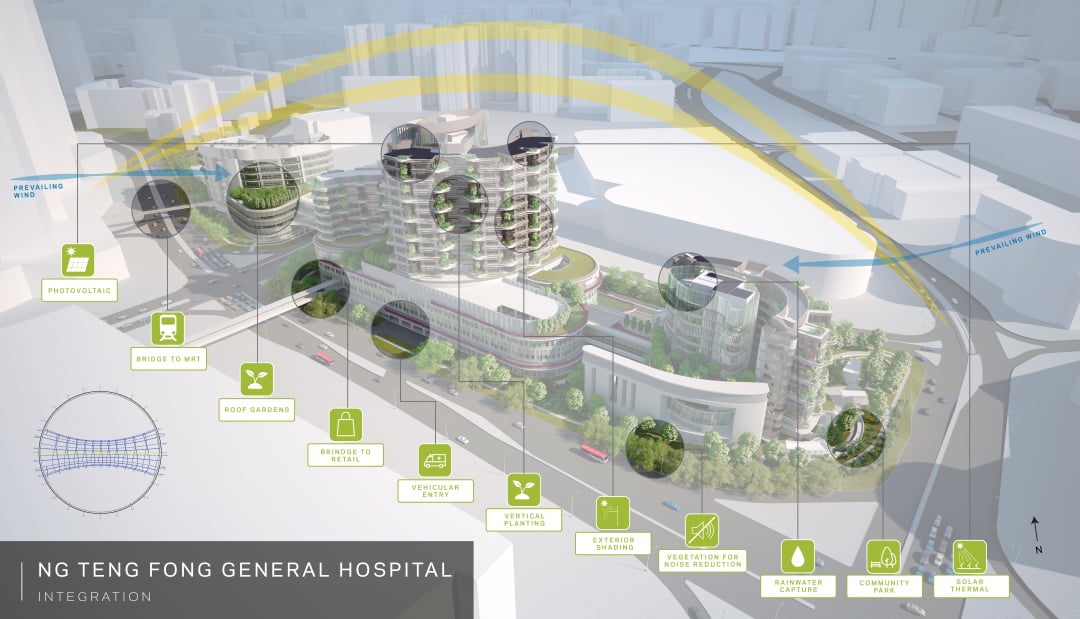
Ng Teng Fong General Hospital & Jurong Community Hospital (NTFGH) incorporates parks, green roofs, and vertical plantings throughout the campus. This project reintroduced ecology to a very dense urban area of the city, bringing back native vegetation and stormwater recycling. Three distinct shading strategies are used to maximize daylight, eliminating the need for excessive artificial lighting inside the building during the day. Natural ventilation provides fresh, natural air. High levels of recycled materials were used throughout, including floor tiles, composite timber, and steel. The building uses 38 percent less energy than a typical hospital in Singapore and 69 percent less than a typical U.S. hospital.
Cost: $371.5 million
Sq. Feet: 1,962,853
2. R.W. Kern Center
Amherst, Massachusetts
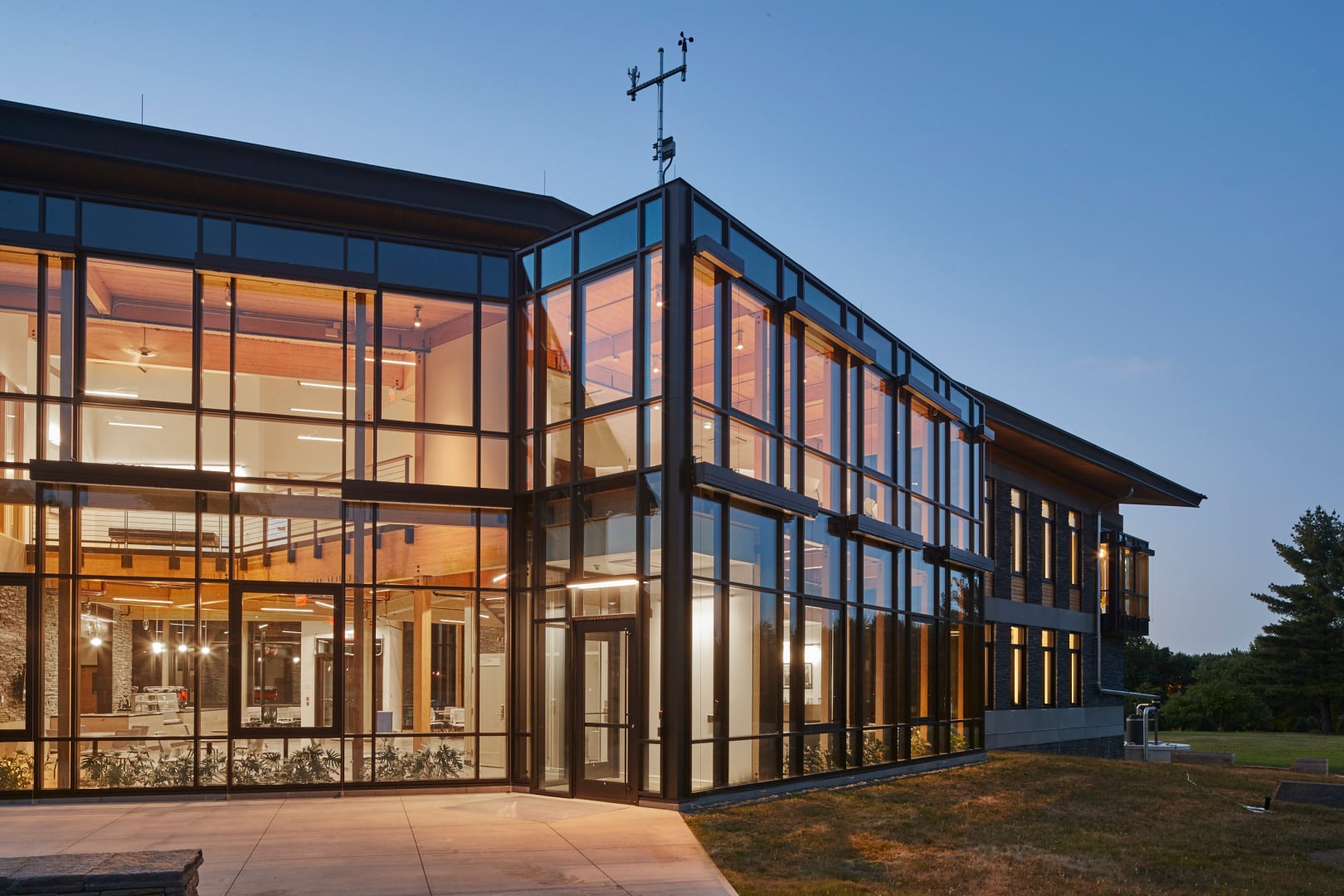
Designed as part of the Living Building Challenge, the R.W. Kern Center at Hampshire College is a self-sustaining structure. It generates its own energy, captures its own water, and processes its own waste. The goal of this build was to develop a net zero energy building in a cold climate, using rainwater, as well as only using local, sustainable and not-toxic materials. The facility maximizes thermal efficiency and utilizes a net-positive water system. Walls can be moved or rearranged for future use without structural disruption thanks to open span glulam timber framing. Because the rooftop photovoltaic system is grid-tied, the college is installing a solar system with storage to power the campus.
Cost: $7.6 million
Sq. Feet: 16,940
3. Manhattan Districts 1/2/5 Garage and Spring Street Salt Shed
New York, New York
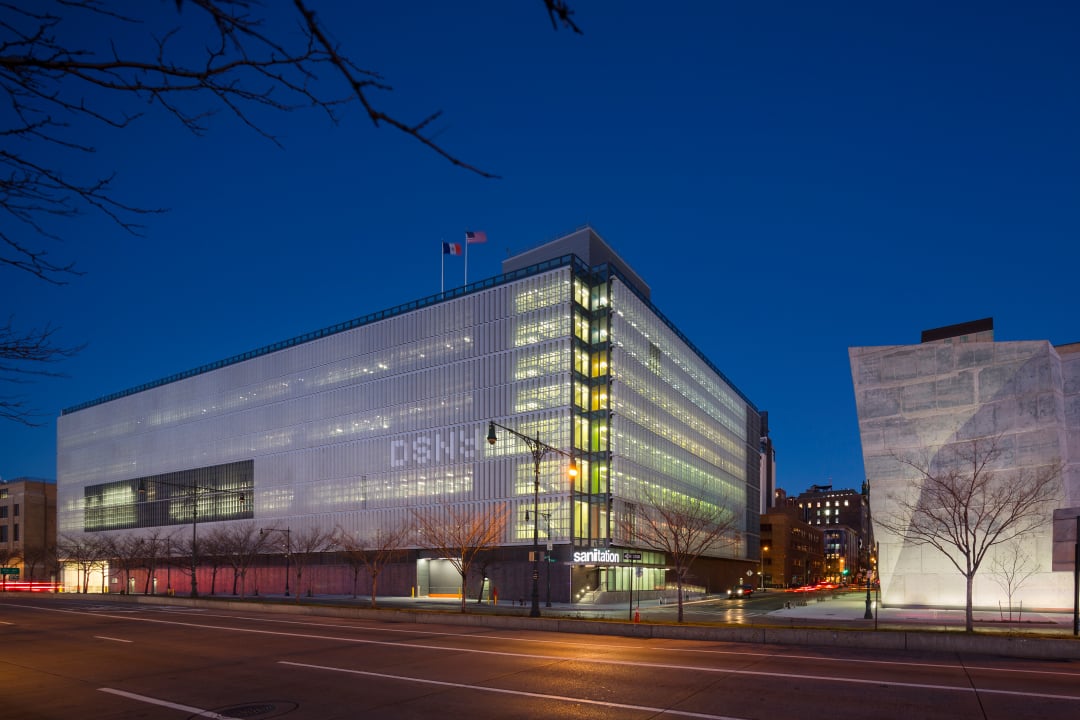
A source of neighborhood pride, Manhattan Districts 1/2/5 Garage and Spring Street Salt Shed is wrapped in a curtain wall facade that brings in light to the interior while reducing solar heat gain. It features a 1.5 acre green roof, which reduces heat-island effect and provides storm water retention. The grey water is used in the building and for truck washing. The building is the first LEED-rated Department of Sanitation and operates on municipal steam to heat the structure.
Cost: $271 million
Sq. Feet: 302,023
4. Brock Environmental Center
Virginia Beach, Virginia
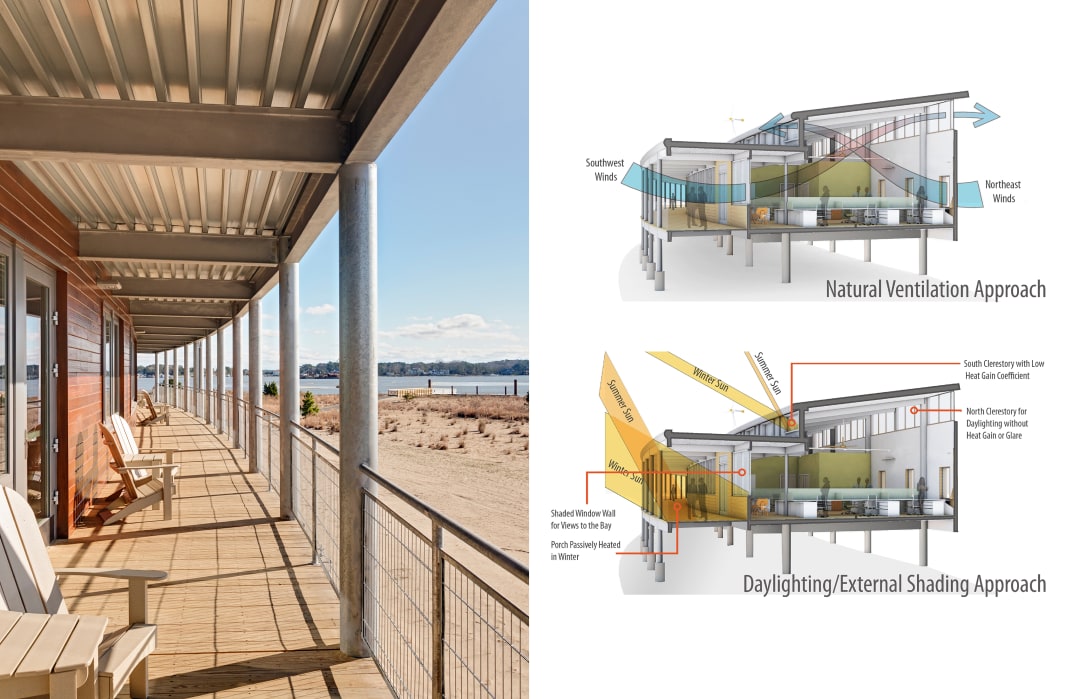
Acting as the hub for the Chesapeake Bay Foundation, the Brock Environmental Center was designed for the Living Building Challenge with zero-net-CO2 emissions and produces zero waste. Seam metal roofs capture rainwater, filtering it for drinking water; it’s actually one of the first U.S. buildings permitted for drinking treated rainwater. The facility also features composting toilets. Strategically placed windows optimize daylight to reduce the need for artificial light, as well as ventilation, and an open air dogtrot provides a microclimate. The building produces more energy than it uses, thanks to two wind turbines and a photovoltaic system.
Cost: $7.3 million
Sq. Feet: 10,518
5. NOAA Daniel K. Inouye Regional Center
Honolulu, Hawaii
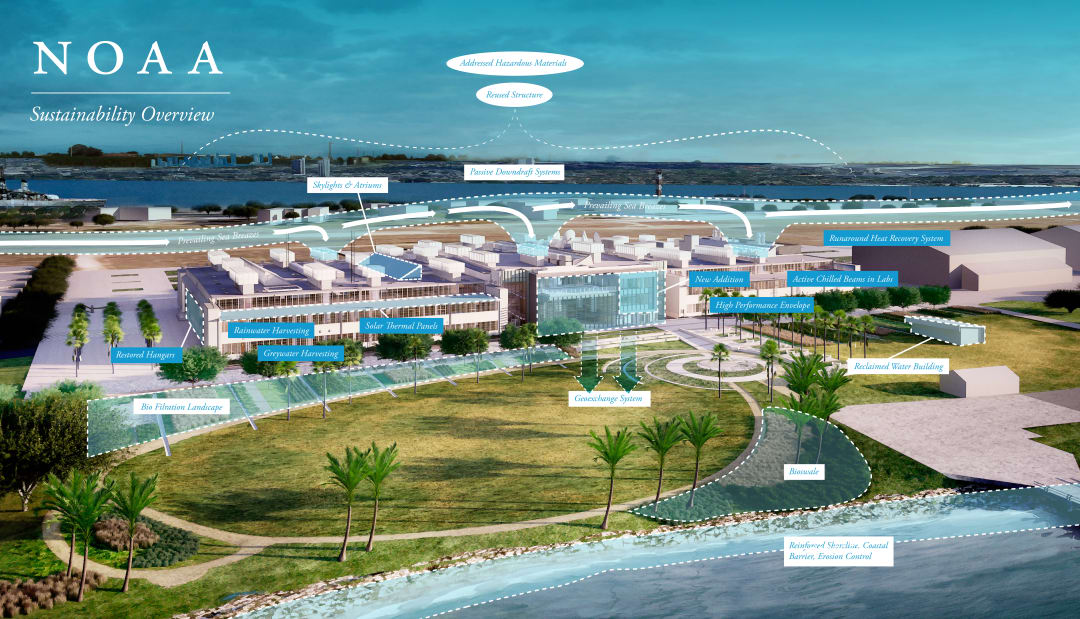
Reusing two World War II-era hangars, the National Oceanic and Atmospheric Administration’s Daniel K. Inouye Regional Center incorporates the natural Hawaiian landscape, and features LEED Gold certification. The water capture system is designed so no grey water leaves the facility, instead dispersing it to plumbing systems and irrigation. Utilizing cooling coils on the roof, a hydronic system pulls water from below the seabed for a natural cooling process. The building is cooled using only outside air.
Cost: $157 million
Sq. Feet: 350,000
Are you working on a sustainable build, or have thoughts about the above structures? Let us know on Twitter and Facebook, or reach out to us anytime to explore Viewpoint’s entire portfolio of construction software solutions.


